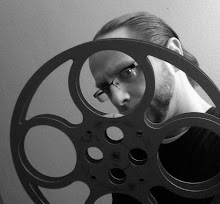Happy Halloween, mortals! In this time of scary stories that can only be delivered by celluloid, the question that horror fans have been debating for over 25 years has risen again: which is the best, and proper way to watch the classic horror film, DRACULA from 1931?
In 1998, composer Phillip Glass was commissioned to compose a score for DRACULA, which was originally released without one. Since its release, horror fans have been debating if this was an improvement, or an abomination.
Because of costs that came with producing an original score to a film’s soundtrack in 1931, DRACULA never had its own music, with only an excerpt from Tchaikovsky’s Swan Lake used in the opening credits, and short bits from Wagner and Schubert in a theater scene. In 1998 for a home video release, Glass, who would win an Oscar in the same year for THE TRUMAN SHOW, was brought in to compose an original score for the film. Glass would take a minimalist approach, using the Kronos Quartet. The release came in 1999 on VHS, and later editions on DVD and Blu-Ray would give fans the option of watching with, or without the score.
But which is better? There are good and bad points to both. In its original form without music, DRACULA can be a drag, with longer scenes without dialogue that seem to take forever to unfold…with only the crackle and hiss to keep us company. And film music, as we all know, goes a long way in helping the audience read the tone of a scene. The absence of this makes DRACULA difficult to take in. On the other hand, with no score we are seeing (and hearing), the film as audiences in 1931 did, with eerie silences and sparse sound. There is also an argument that the lack of music makes us focus more on sounds like footsteps, creaking doors, and star Bela Lugosi’s voice.
The voices in support of the Glass score are strong. The added music gives the film a hypnotic vibe and adds a lot of creepy atmospheres. The score fills the silence, giving us a sense of momentum and tension. It also bridges the gap between old and new audiences, making the film more accessible to modern audiences without altering visuals (like colorization or CGI effects).
For this Blogger, the scored version is the way to go. It feels less cobbled together, and the pacing is magically improved. The film is just better. The original version offers a pure sense of cinema history, but if revisiting or showing it to someone new who may struggle with the pacing, the Glass version is a tasteful, and elegant bridge into classic horror. DRACULA is creeping up on its 100th anniversary, and if it is to endure the ages, the scored version is the gateway.



